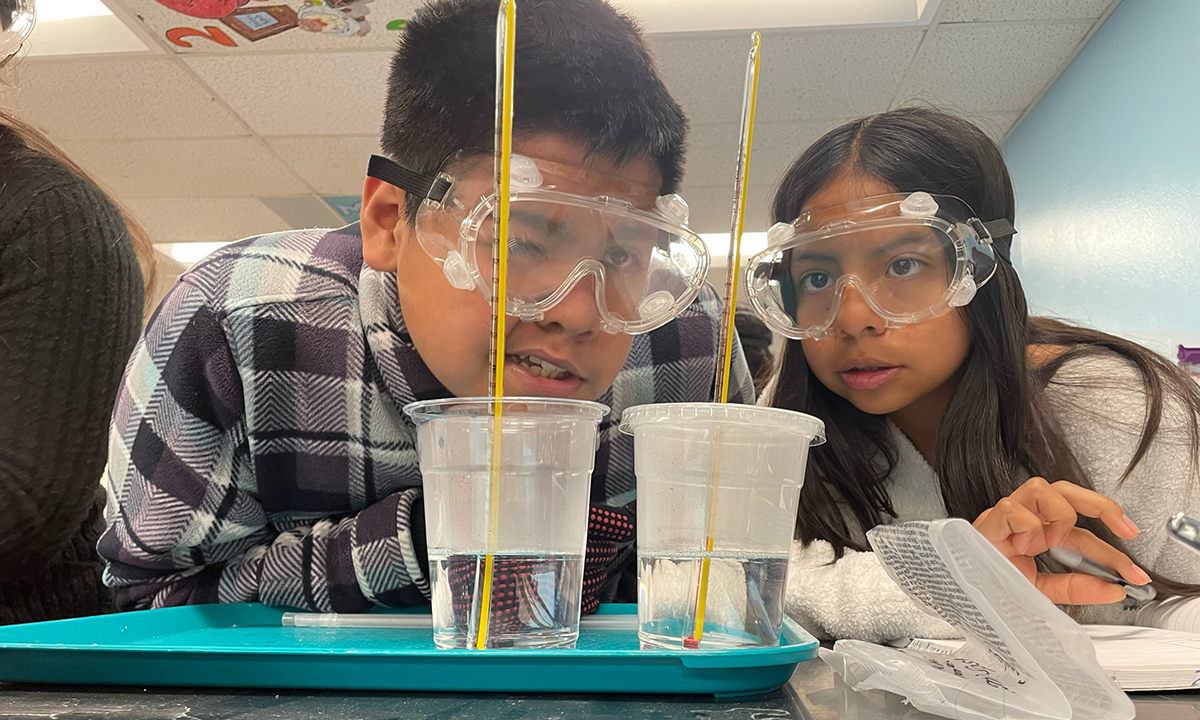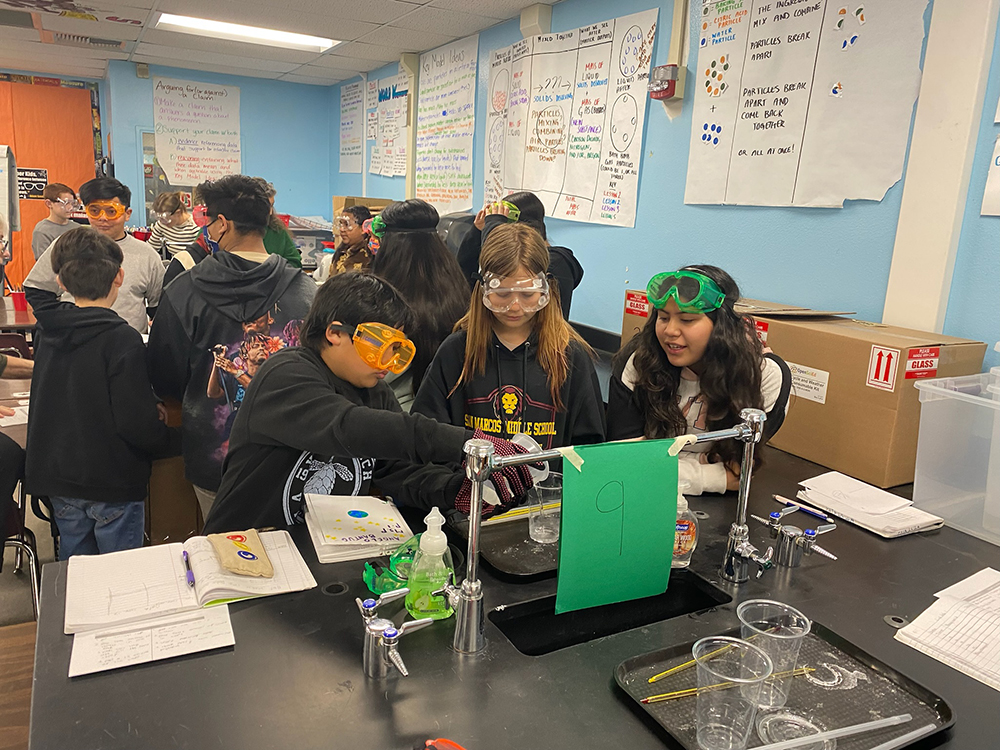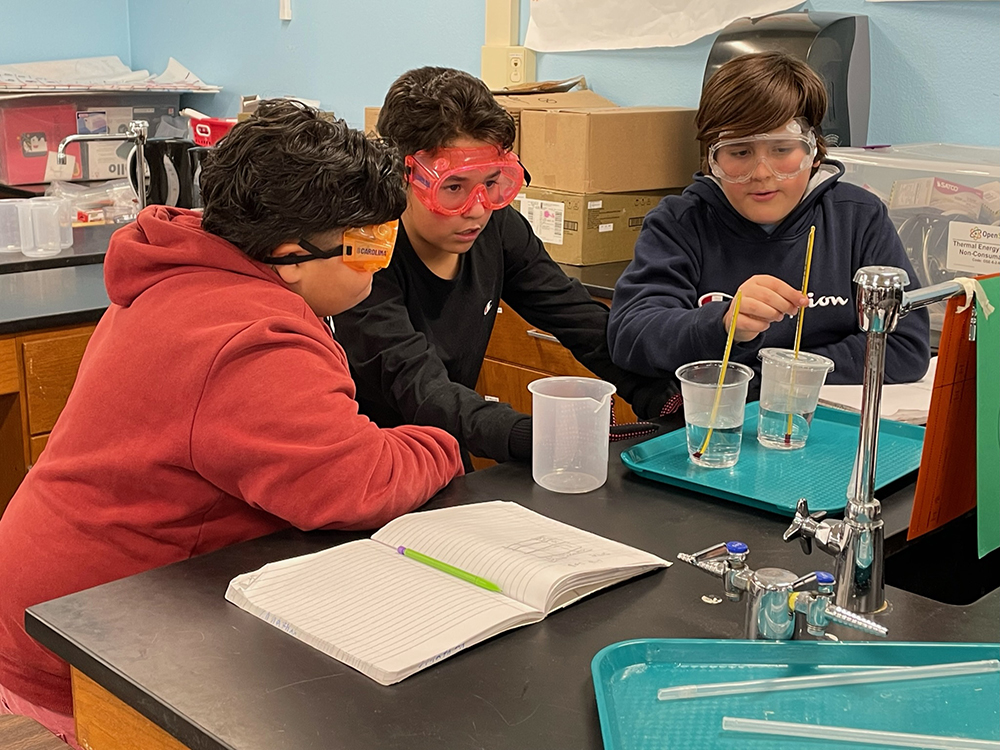In California, ‘Slow and Steady’ Is Winning With a Tougher Science Curriculum
How San Marcos Unified School District found success with implementing a new high-quality curriculum.

Get stories like this delivered straight to your inbox. Sign up for The 74 Newsletter
This is the first in a series of essays from a Knowledge Matters Campaign tour of school districts using high-quality science curriculum. In this piece, Nikki DiRanna, director of curriculum and instruction for San Marcos Unified School District in southern California, relays how the district has found success with their slow and steady implementation strategy. Follow the rest of the series and previous curriculum case studies here.
Developing a sense of curiosity was the expectation in my house, so science had always been a part of my life. But, it wasn’t always my favorite class. So it’s been my goal as an educator to change that experience for students — to inspire them with the kind of science education that fills them with a sense of wonder, and to give them the agency that they, too, can be scientists, if they so choose.
I have taught science for more than 20 years. I’ve been in hundreds of science classrooms, mostly witnessing students compliantly writing notes into graphic organizers, passively watching their teacher explain the parts of the digestive system, for example. I suffered through data reports showing that only certain students — generally those of a certain ethnicity, gender or ability — were successful in science while others were left woefully behind. I watched as teachers worked countless hours to write their own curriculum, gather their own materials and struggle to make lessons work. And, hardest of all, I listened to students share their distaste for their science classes.
Science is a subject of curiosity, wonder and exploration, but our classrooms did not mirror this. I knew — and the talented educators I worked with knew — that something had to change.
Then the stars aligned, in a way that rarely happens. California adopted Next Generation Science Standards, which, instead of treating learning like a “sit and get,” takes what they call a “three dimensional” approach that moves students from passive learners to curious architects of their own learning. Our teachers were hungry to learn about the new standards, and to better understand the pedagogical shifts they required. The district created a multiyear professional learning plan for all secondary teachers, which our teachers eagerly embraced, spending time away from their classroom and during the summers and weekends to dive deeply into NGSS and realign their instruction to meet those demands.
And, we needed instructional materials! But, we specifically needed materials that could provide teachers with tools to help students make sense of what they’re learning. We knew that to achieve that, we would need to implement a curriculum that was designed around the pedagogy of NGSS rather than around isolated facts of science.

In the 2020-21 school year, now on Zoom, our middle school science teachers used the Toolkit for Instructional Materials Evaluation to consider two open source curricula. Teachers were particularly impressed by OpenSciEd, noting the curriculum’s intentional connections to sensemaking and previous learnings, while effectively progressing learning. We ultimately selected OpenSciEd for our middle schools.
Implementing a new curriculum is never smooth, it never fits just right at first, and it never magically solves all of our problems. We knew the instructional shifts and changes required to implement Open SciEd were going to challenge teachers. We wanted to provide teachers the space to try out the pedagogy, to take risks in their classrooms and to be vulnerable as they learned new ways of learning, without high stakes accountability. So we implemented it slowly. We asked teachers to complete two units a year and continue to add two units each year until we implement all units. Teachers are supported in the implementation of each unit with professional learning, including Lesson Studies centered around certain pedagogical moves, such as what OpenSciEd calls the “Scientist Circle.”
For the last decade, SMUSD has invested significant time and resources to improve the quality of science education, and the proof of our success is in our classrooms. Our students are engaging in learning that is centered around them, that cares about their understanding, and that teaches them to work together to strengthen their understanding of concepts.

“This collaboration idea doesn’t just apply to science. It applies to everything we are going to do, no matter what career you pursue,” one student said during the Knowledge Matters School Tour visit. “You are going to have to collaborate with everyone else. You and other people are going to have to solve it and work together.”
While the change has been challenging, the students are already showing growth, one teacher said, adding that teaching the new lessons becomes easier as time goes on. “I think it’s through the science and engineering practices that we’re really getting kids to express what they know,” another teacher observed. We’re opening their eyes to becoming global citizens.”
We are moving in the right direction. We are moving towards a classroom environment where each and every student, no matter their ethnicity, gender or ability, is engaged in building their scientific knowledge and developing their critical thinking, collaboration and communication skills, and most importantly, their confidence in seeing themselves as potential scientists.
Get stories like these delivered straight to your inbox. Sign up for The 74 Newsletter

;)